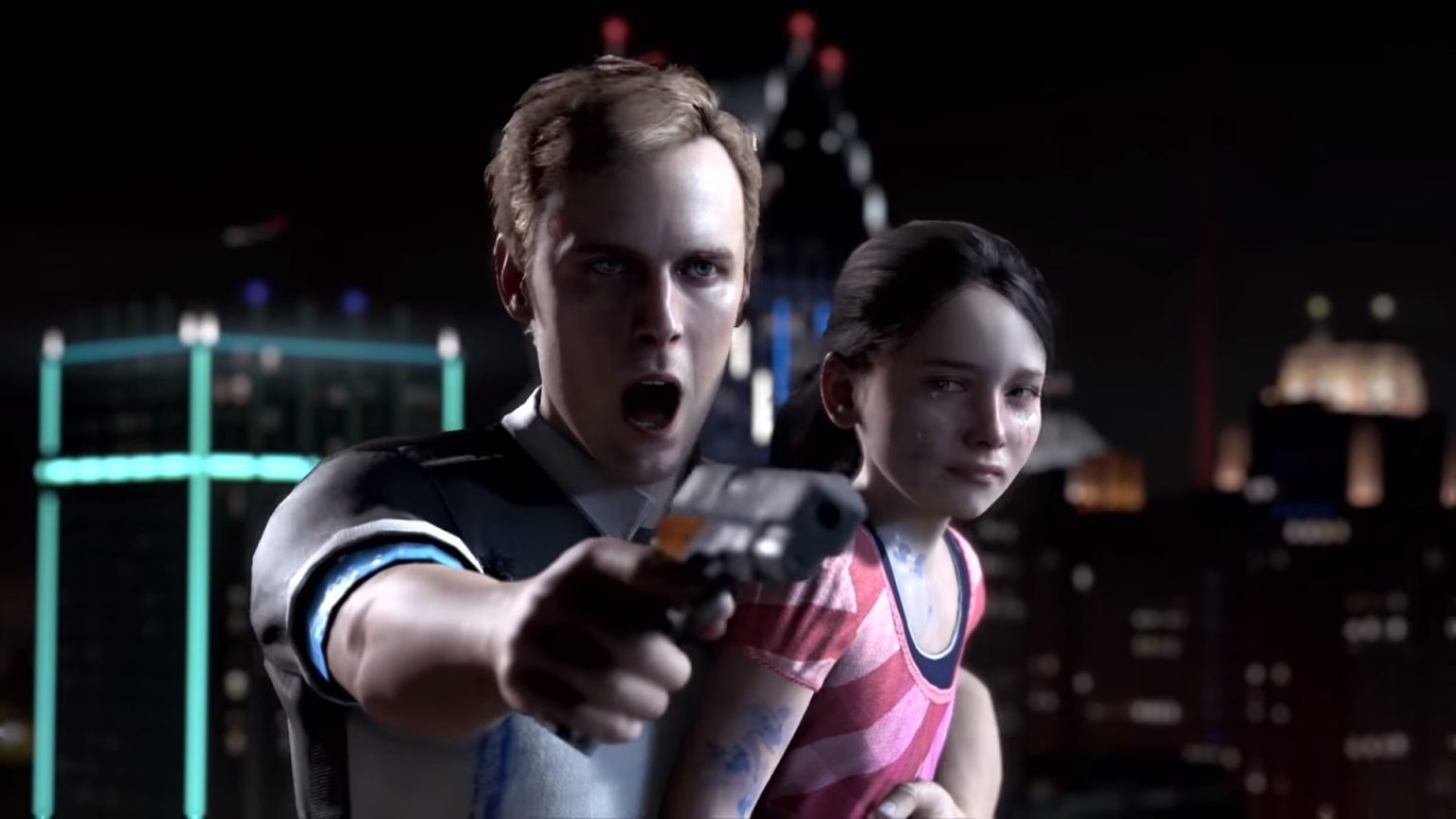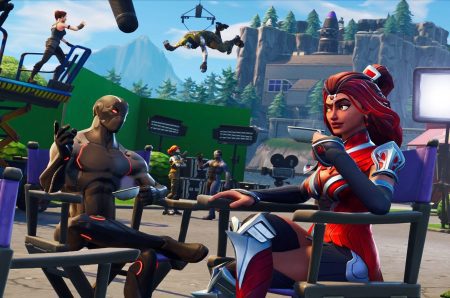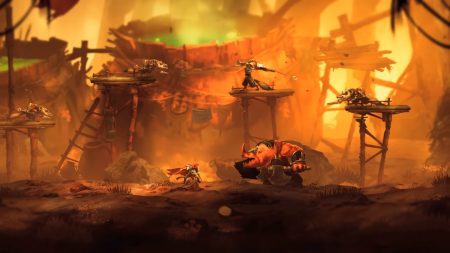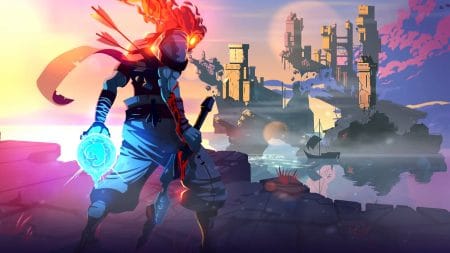La Crème de la Crème of Paris’ Premier Gaming Expo
Paris Games Week came and went last month. Amid the noise and fervor caused by Sony’s impressive October 30 PlayStation Showcase (catch up on all the announcements here), you’d be forgiven for not realizing that the conference preceded an actual, tangible exposition in the heart of Paris. From November 1-5, swathes of Parisians and travelers alike roamed the halls of Paris Games Week in search of developers to meet, esports to watch, and games to play.
With nary a peep of coverage from American outlets, I thought it’d be fun to highlight the best and brightest of the games I played this year at the show. Avoiding further introduction, here are my top ten games from Paris Games Week 2017:
Honorable Mentions:
When constructing my list of the best games from Paris Games Week 2017, I held myself to certain restrictions in order to keep things interesting. First, any game on the list must be unreleased (otherwise, Super Mario Odyssey and Breath of the Wild would have made the cut, seeing as how Nintendo had both on display for show attendees). Secondly, ports of existing games, even if unreleased, are ineligible since we’ve essentially played the game already.
In spite of these criteria, I felt the following three games were worth mentioning due to their ingenuity and technical prowess.
Dead Cells
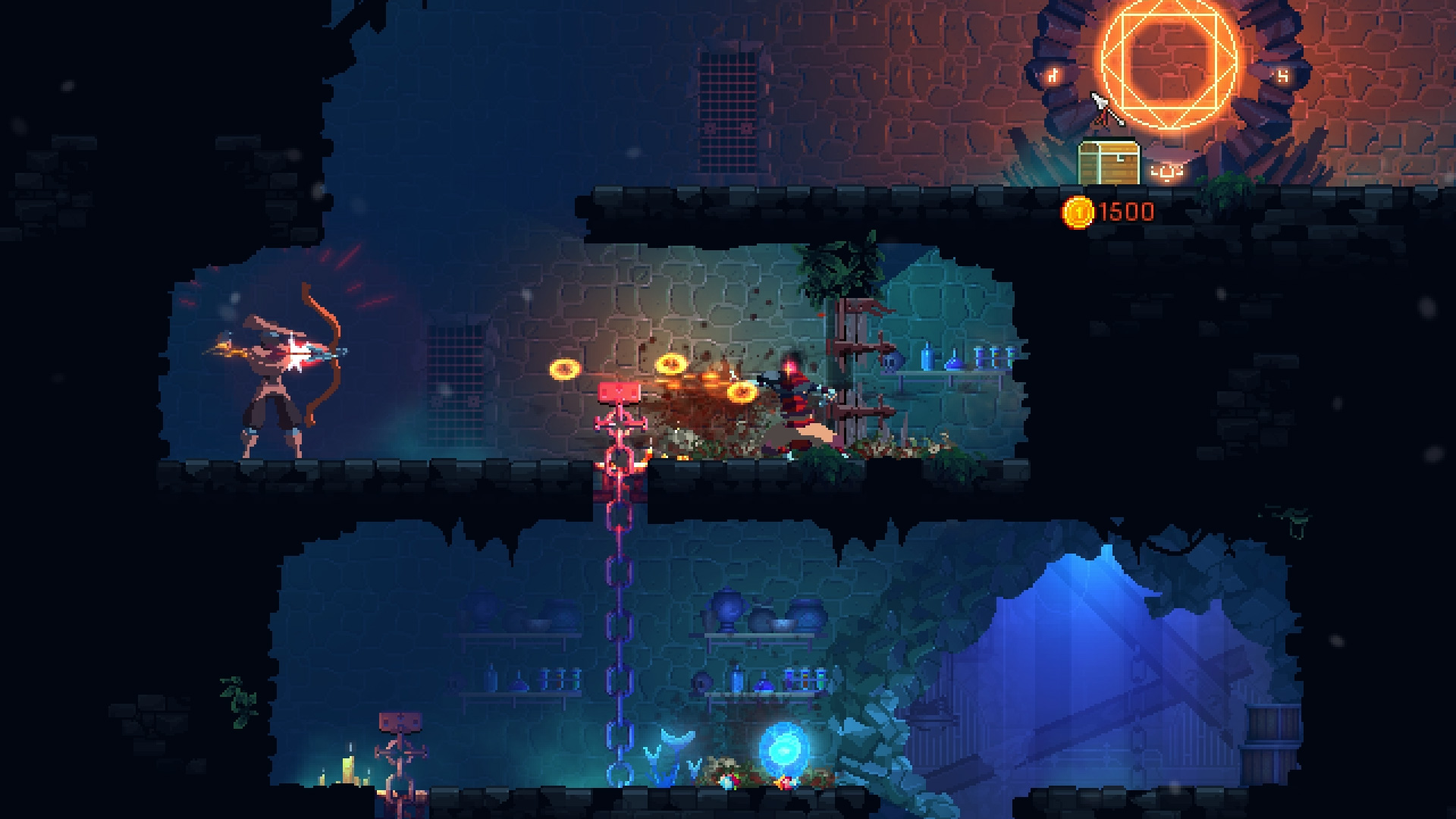
The first, Dead Cells, was kept off my top-10 list due to the fact that the game is already available to players through Steam Early Access, where it was released back in May 2017. However, it would be remiss of me not to highlight this still-in-development game and its incredibly exciting take on the roguelike genre.
By merging Metroidvania-style exploration with procedurally generated 2D-mazes, Dead Cells offers a refreshing take on the old-school action-platformer. Add to this an impressive loot system and addictive, Dark Souls-like combat that relies on smart, predictive dodging and twitch-based reflexes, and Dead Cells made for a hidden gem among the titles on display on the Paris Games Week show floor.
For more on Dead Cells, be sure to check out my full impressions from Paris Games Week here.
Doom & Skyrim (Switch)
The second and third games deserving of mention—the Switch ports of Doom and Skyrim—make for a dual-entry due to the fact that they’re both included here for the same exact reason: they run incredibly well on Nintendo’s flagship console.
As I approached Bethesda’s minuscule booth at Paris Games Week, I was skeptical about how well either game would perform on Nintendo’s piece of hardware. While the Switch had provided its fair share of stunning vistas in Mario Kart 8 Deluxe and The Legend of Zelda: Breath of the Wild, the little system that could still had a lot to prove in my eyes and the eyes of third party developers worldwide. Picture my surprise when I played both Doom and Skyrim to find that, not only do they run just fine on the Switch, but they look especially good on the tiny screen.
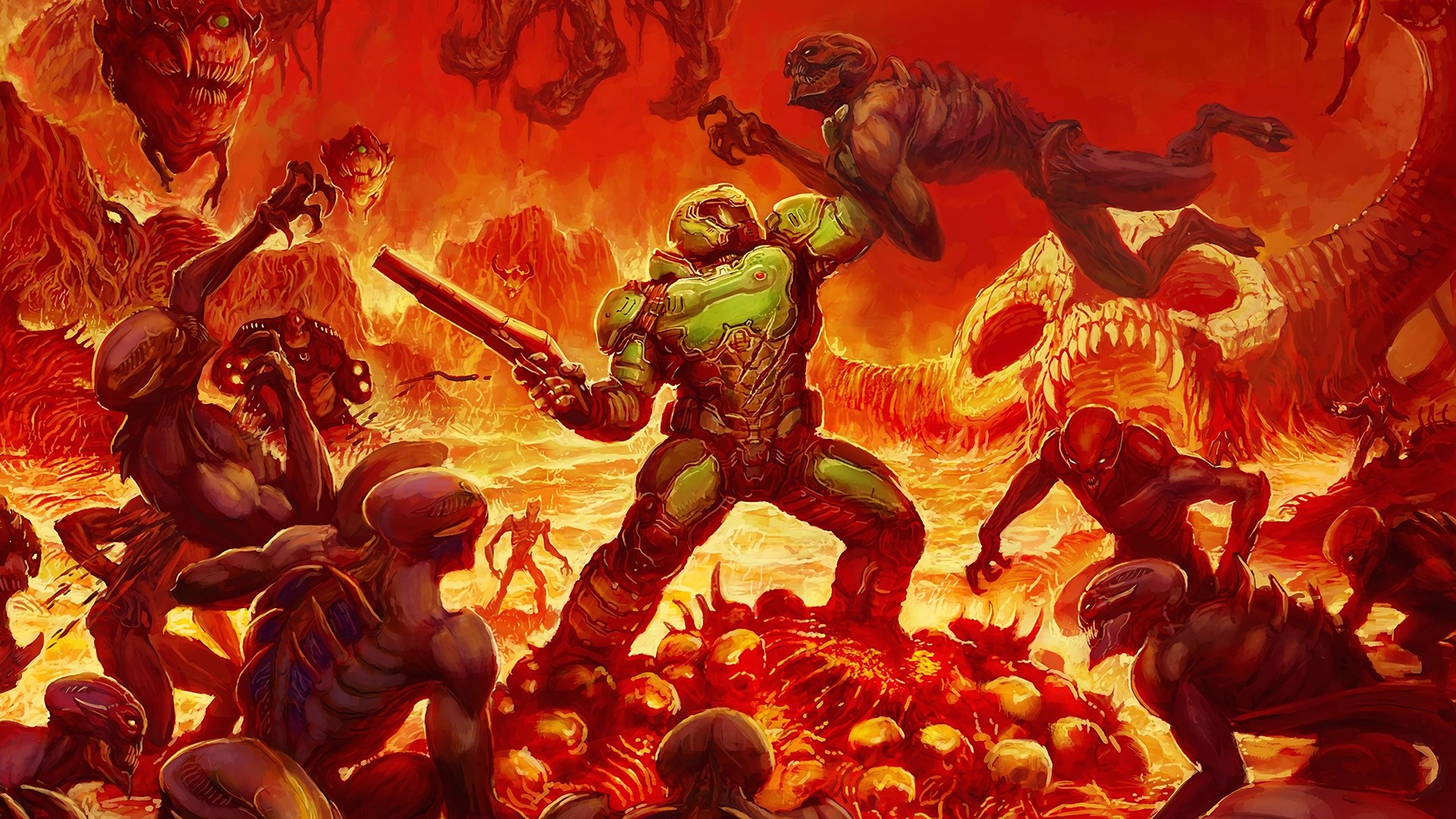
Doom, while downgraded from 60fps to 30fps and noticeably more blurry on Switch, is practically the same exact game you played on PC, Xbox One, and PlayStation 4. While franchise purists will argue that the cut to 30fps leaves Doom feeling slower and, therefore, unauthentic, I have this to say: what did you expect from a portable console with less firepower than a base Xbox One? It truly is a marvel that Bethesda got this game up and running on Switch; the fact that it looks darn good to boot only adds to how impressed I was when trying it out for myself. Those who liked the game back in 2016 who don’t mind the slower gameplay should find plenty to like with Doom on Switch.

Skyrim, meanwhile, looks and performs nearly as well. Granted, that’s not quite as much of an accomplishment, given the fact that it’s a game from 2011, but for a game as massive as this, I’ll call it a win for both Bethesda and Nintendo. Textures are surprisingly sharp, and environments pop with the same vividness as they had on PC, Xbox 360, and PlayStation 3 six years ago. Not everything transitioned perfectly, however—I did notice some frame-rate drops outside of Whiterun, but they were negligible compared to how fun it felt to play Skyrim again, this time on the go. Like Doom, Skyrim should be on every Switch owner’s radar this Christmas.
10) Final Fantasy XV Pocket Edition
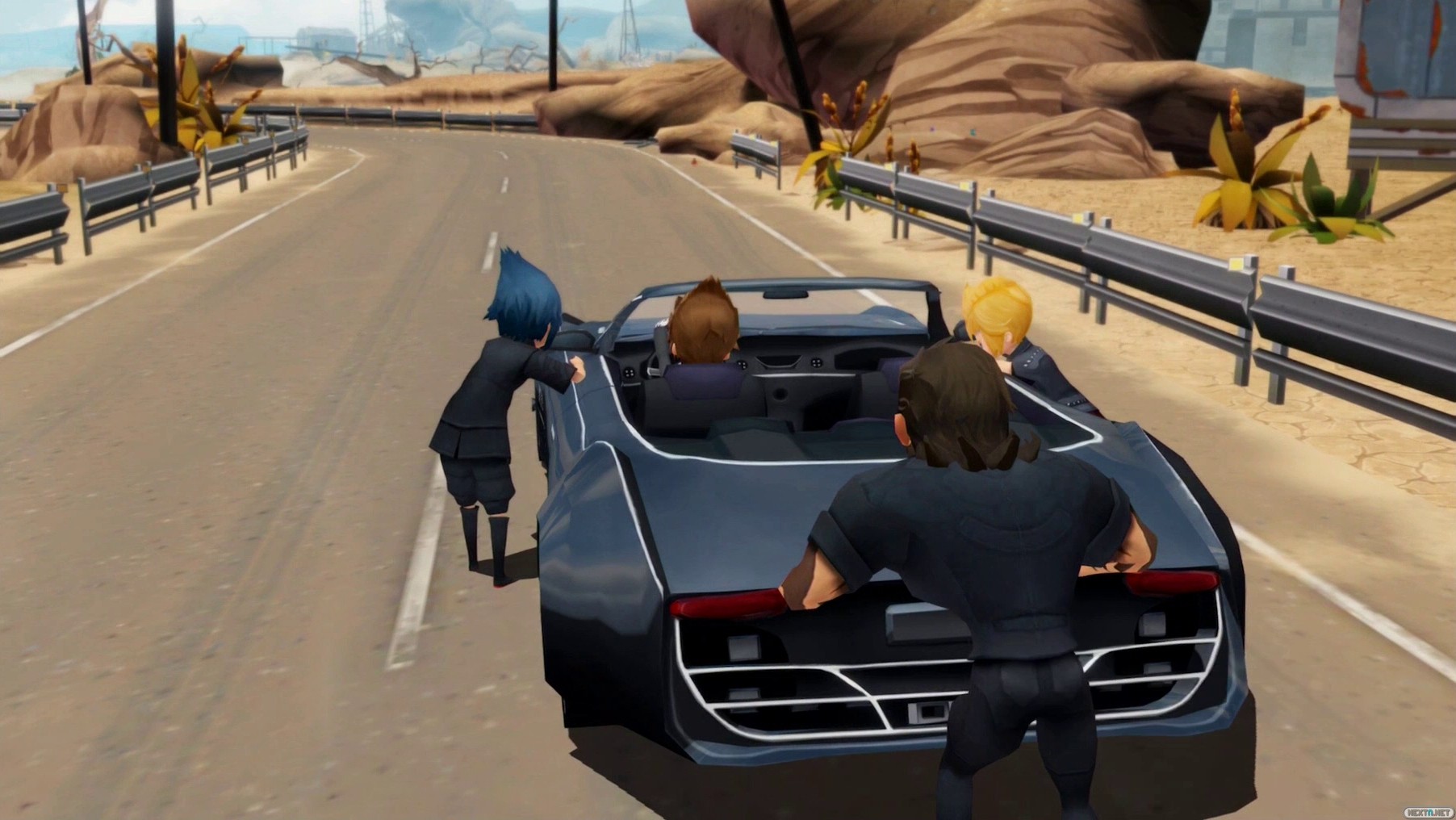
It feels like Final Fantasy XV has been beaten to death at this point. Between the Brotherhood anime, Kingsglaive CGI film, Platinum Demo, Comrades multiplayer expansion, Ignis DLC, and Monster of the Deep VR fishing game, it’s easy to forget that Final Fantasy XV was once teased as a singular release. Regardless of how people ended up feeling about the 2016 product (I wasn’t the biggest fan), this should come as a bit of a pleasant surprise: Final Fantasy XV Pocket Edition not only runs well, but is fun to boot.
I played through the opening section of the game on iPad, with Noctis and crew navigating the desert in order to hunt down a beast upon request from an NPC named Dave. As previously advertised by Square Enix, Pocket Edition follows the original XV to a tee, with the same areas, characters, voice acting, and storyline as the 2016 console version. Combat has been streamlined for mobile play, with movement relegated to taps and warpstrikes initiated by holding a long press over a particular enemy.
It works surprisingly well, and despite the fact that I’d played it before in greater detail, I found myself satisfied by what Square Enix had accomplished on mobile with Pocket Edition. Whether you’re new to Final Fantasy XV or you’ve played the base game to death, Pocket Edition is worth watching when it releases this winter.
9) Ni no Kuni II: Revenant Kingdom
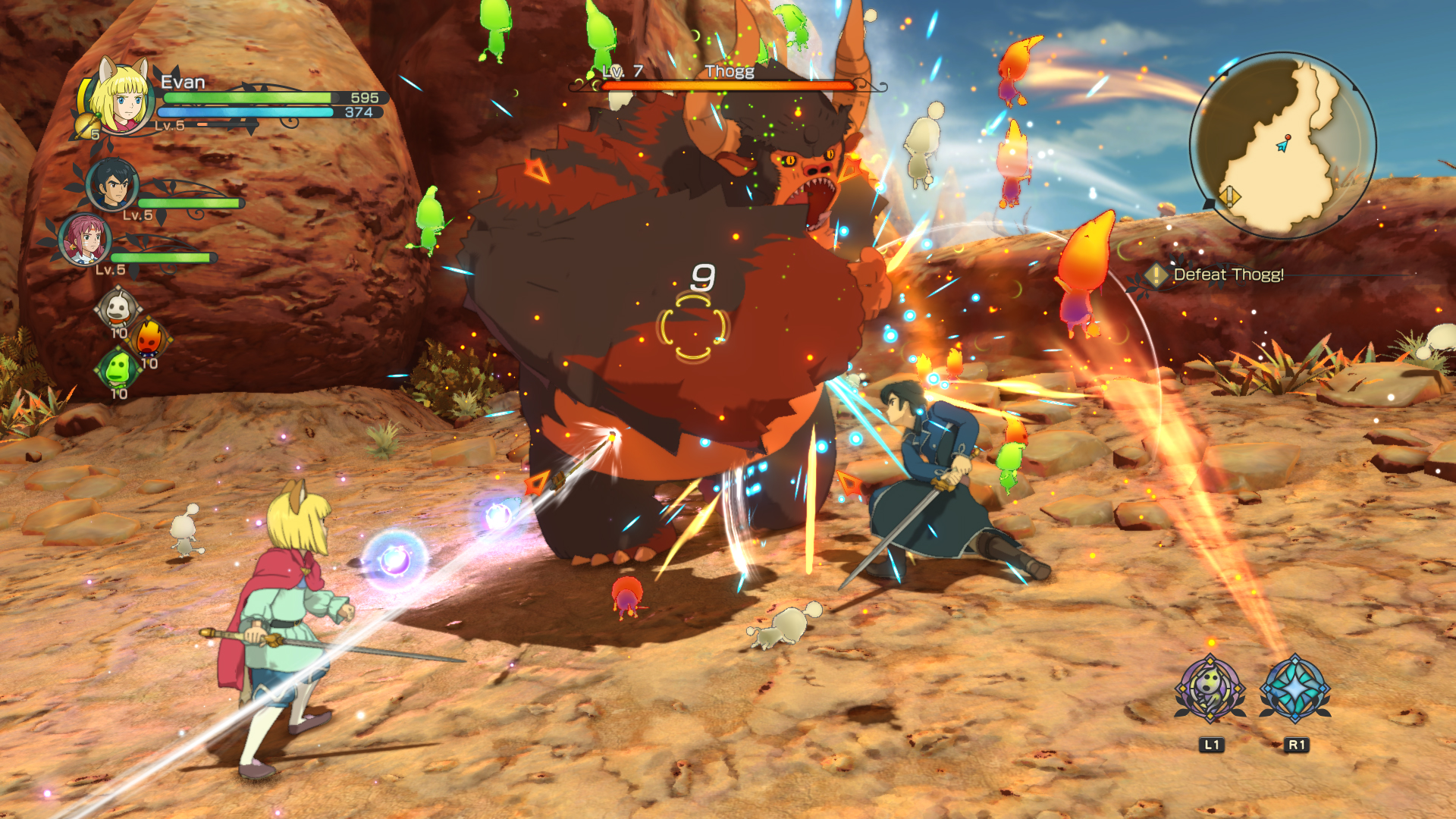
When I played Ni no Kuni: Wrath of the White Witch in 2013, I came away from the game surprisingly torn. As a massive fan of both Studio Ghibli’s films and Level-5’s previous games, I thought Ni no Kuni would be a slam dunk as far as JRPGs were concerned. The more I played it, however, the more kinks in its armor I found. Despite eliciting some of the same emotion I’d felt watching Princess Mononoke and Spirited Away, Ni no Kuni failed to grasp me with its overly simplistic combat system and repetitive enemy encounters.
Ni no Kuni II: Revenant Kingdom seems to have kept everything I liked about the original Ni no Kuni while doing away almost completely with the bad. Combat has been completely scrapped and revised; familiars are gone, and players remain in control of main character Evan throughout the entire battle. In place of having these Pokémon-like familiars, Ni no Kuni II employs a Pikmin-like system that has players managing an army of little, magical creatures while moving, dodging, and casting spells around the battlefield in real time.
While the demo on display at Paris Games Week was brief, I played enough of Ni no Kuni II’s combat to know that I liked it infinitely better than what made the cut for Wrath of the White Witch. It felt like I was back in control of a powerful magician, as opposed to wailing mindlessly on enemies as weaker, feeble minions. Admittedly, this meant that the game also felt far too easy, at least based on this small vertical slice. That said, if Level-5 can fine-tune Ni no Kuni II’s difficulty ahead of its January 18 release date, fans should have plenty of reasons to be excited.
8) Attack on Titan 2

A surprise addition to the Paris Games Week lineup of showcased games, Attack on Titan 2 made a big splash at the show with an impressive demo. The demo picks up during a scene straight out of season two of the Attack on Titan anime. Connie, Reiner, Bertoldt, Ymir and Krista are holed up on top of Castle Utgard as a group of Titans led by the mysterious Beast Titan lays siege to the complex. When all hope seems lost, the 104th Trainees are defended by four senior members of the Surveys Corps: Gelgar, Lynn, Nanaba and Henning.
In control of one of these four military personnel, players swing around the battlefield on the series’ iconic 3D maneuver gear in search of Titans to fell. Attack on Titan 2 requires careful positioning when targeting part of a Titan’s body. As is the case with the show, the nape of the neck is the Titan’s weak point; chopping off a leg may topple one of the beasts, but a killing blow will always come from behind the head.
Combat in Attack on Titan 2 is thrilling. Despite having trouble making sense of some of the game’s controls (the demo’s tutorial was entirely in French), once I found my rhythm, everything began to click. Soon, I was shooting across the battlefield, weaving under Titans’ legs and scoring big enough hits to take them down.
While the original Attack on Titan video game employed the same battle system to much praise, it received flak for its lack of mission variety. While it’s hard to judge how well Attack on Titan 2 will fare in this regard, the prospect of playing through season two of the hit anime in game form is simply too tempting to ignore. Attack on Titan 2 releases on March 20, 2018 for PlayStation 4, Xbox One, Nintendo Switch, and PC.
7) Dragon Ball FighterZ
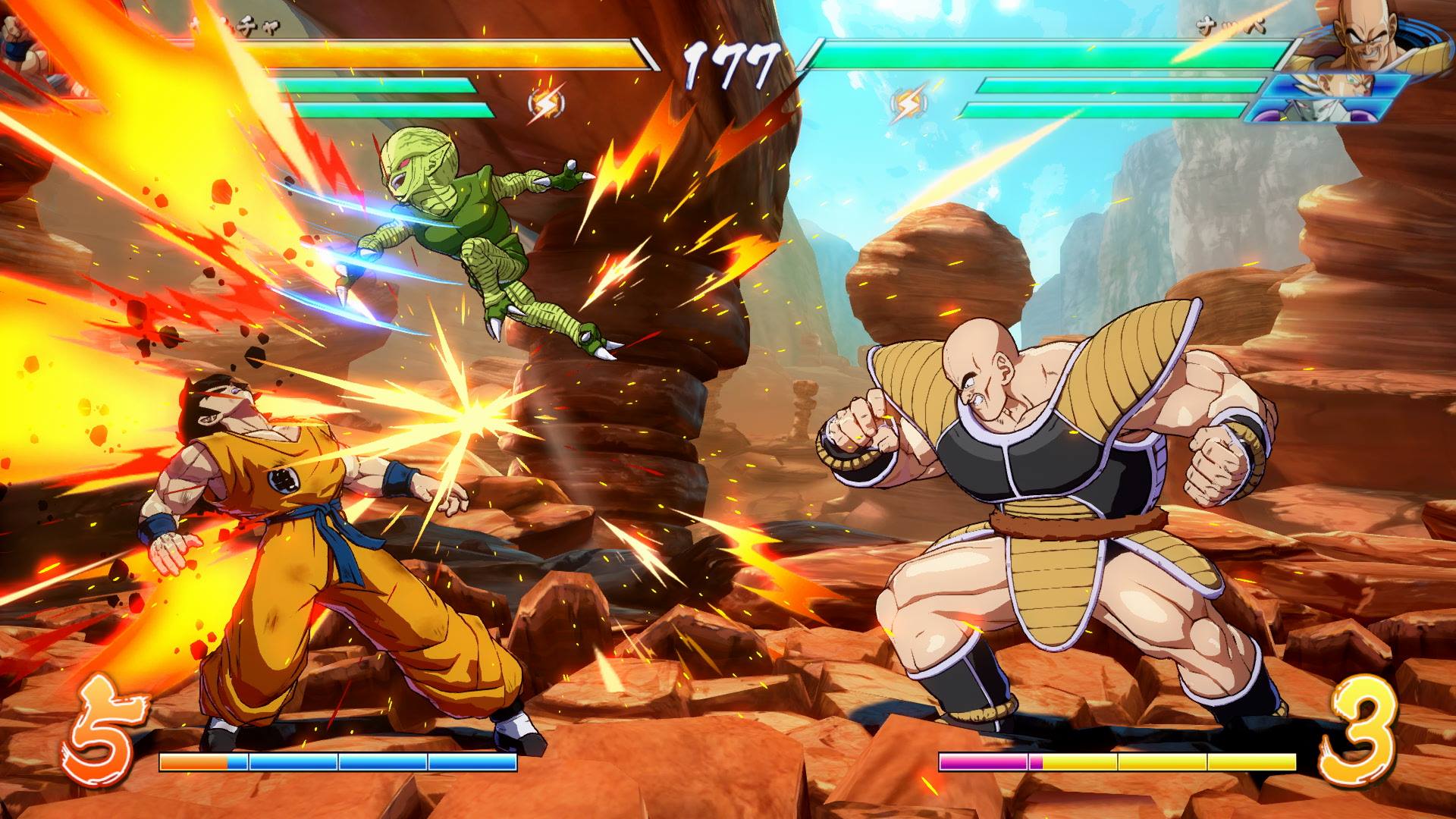
I’ll admit it: I’m not the biggest fan of fighting games. The concept of dedicating hours to a single character’s move-set and practicing the same combos repeatedly to gain a competitive edge just never appealed to me. Don’t get me wrong—I can appreciate people’s enthusiasm for the genre and even tune in to enjoy the occasional EVO grand finals, but playing these games isn’t my thing.
However, when the action is as pulse-pounding and the visuals are as spectacular as they are in Dragon Ball FighterZ, even genre casuals like myself get excited.
I played a few rounds of DBFZ at a crowded Bandai Namco booth. Situated between an onstage hype-man commentating a live gameplay demo of Code Vein and swarms of people lining up to play the latest Naruto game, I and a legion of die-hard Dragon Ball fans found ourselves squished right in the middle. (While interesting enough, the Naruto game in question, Naruto to Boruto: Shinobi Striker, wasn’t quite polished enough to make my list.) With DualShock 4 controllers in hand, my competitor and I assembled our teams: Picolo, Frieza, and Buu for me; Goku, Gohan, and Vegeta for him. After a choice of costume colors and stage, we were off to the races.
Despite never having watched a full episode of Dragon Ball in my life, I found Dragon Ball FighterZ immediately fun to play. Combos are equal parts intuitive and flashy (not unlike the developer’s past work on BlazBlue), and the ability to swap characters out at will gives the game a friendlier, Marvel vs. Capcom vibe to it. One moment I was duking it out with my hands as Picolo, while the next I was firing a massive purple energy beam across the stage as Frieza. This variety of fighting styles, combined with a gorgeous cel-shaded aesthetic, lends credence to the idea that DBFZ will be a game for all types of gamers. Regardless of your affinity for Dragon Ball and fighting games in general, DBFZ looks set to appease a broad range of audiences when it releases next year. Let’s just hope Bandai Namco brings it to the Switch.
6) Unruly Heroes

A hidden gem tucked between fellow indies on the Paris Games Week show floor, Unruly Heroes made a surprising impression on me. Developed by the recently founded, Montpellier-based Magic Design Studios and creatively led by numerous ex-Ubisoft talent, Unruly Heroes is a love letter to 2D platformers both old and new.
Unruly Heroes’ influences are as visible as they are encouraging. Like beat ’em ups of old, players can play through levels either solo or in four-player co-op, with the added modern amenity of drop-in, drop-out play. With four different main characters—the monkey Wu Kong, master Shifu, pig Ki Hong, and monk Sand Monk—players have access to a variety of different powers and abilities as they navigate levels, avoid obstacles, and fight enemies.
The game also sports a painter-like art style, not unlike the recent Rayman Origins and Rayman Legends. This is far from coincidental, given the work that several of the studio’s ex-Ubisoft developers provided for Rayman Legends. Expect these similarities to also carry over into gameplay itself, from the game’s tight and precise controls to its breakable scaffolds and multi-layered levels.
Outside of the main game, Unruly Heroes also contains a full-blown PvP mode for up to four players. Taking cues from games like Super Smash Bros. and PlayStation All-Stars Battle Royale, the competitive mode of Unruly Heroes offers a fun, lighthearted way to unwind between levels. Playing as the monkey Wu Kong, I faced off against the game’s level designer in order to see who would be the first to collect ten glowing orbs around the stage.
Using the same move-set as in the campaign (comprised of directional-based ground and aerial attacks as well as a “recovery” move that covers additional distance), I jumped from platform to platform, scooping up orbs while fending off attacks from my opponent. Being knocked off the stage would cause me to lose several orbs, while finding a particularly large, Smashball-esque orb would yield an impressive three-in-one bundle of points. Although I ended up losing (the odds of beating the level designer were slim at best), I had great fun nonetheless.
Fluid and expressive, Unruly Heroes is a smaller scale game with a large heart. Look for it when it launches in early 2018 on Xbox One, Nintendo Switch, PlayStation 4, and PC.
(For more on Unruly Heroes, be on the look out for my interview with the game’s community manager in the coming days.)
5) Super Meat Boy Forever
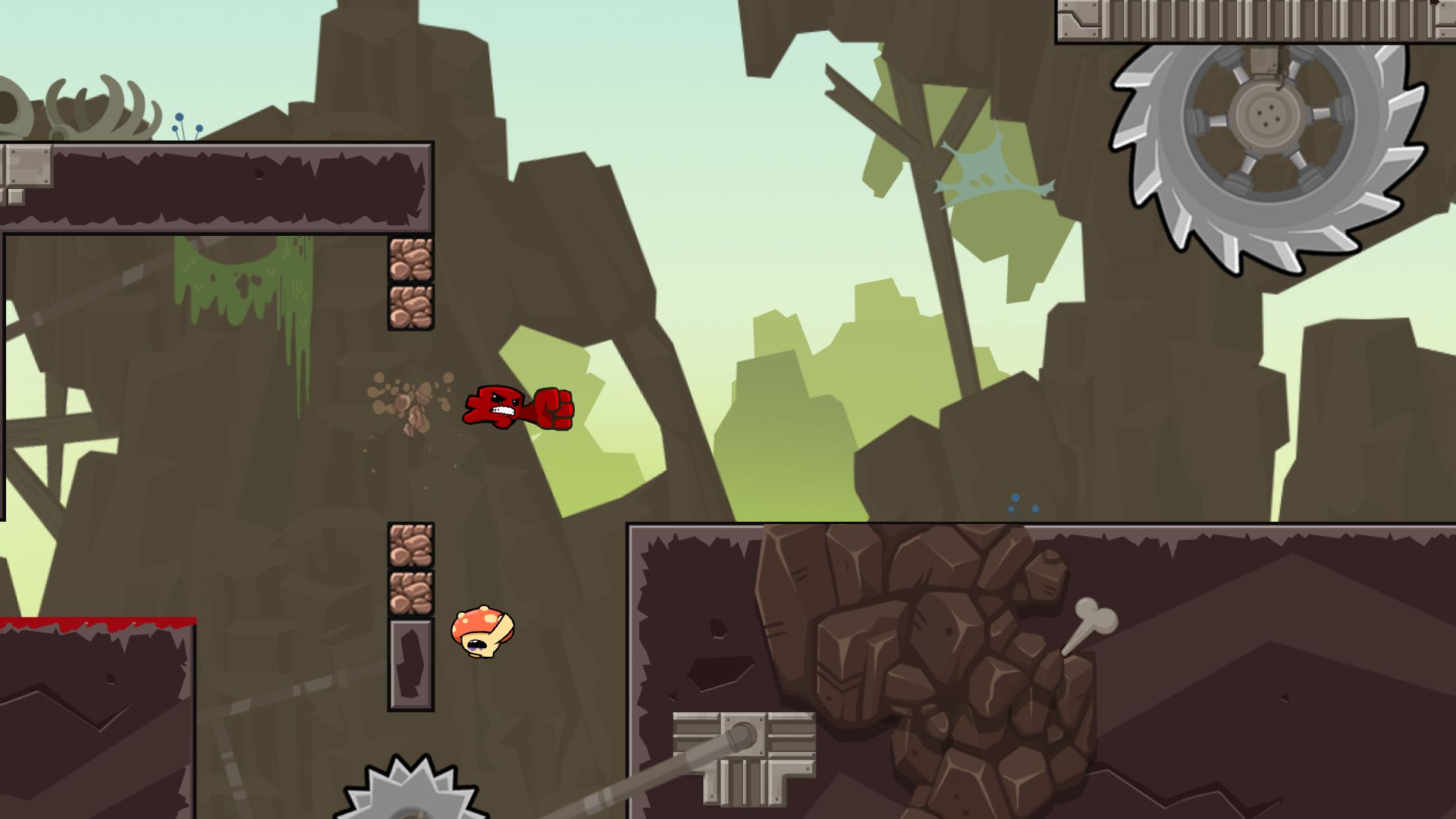
Nintendo’s booth at Paris Games Week was largely reserved for games we’ve already played. Arms, Splatoon 2, Super Mario 8 Deluxe, Breath of the Wild, Super Mario Odyssey… If you already own it, it was at the show.
Despite the fact that Nintendo’s booth lacked heavy hitters (to be fair, much of their 2018 lineup remains a mystery), there were still reasons to get excited about the Switch at Paris Games Week. For me, those reasons came almost exclusively from a pair of indie games shown off at the show, the first being the aforementioned Unruly Heroes, and the second being the hotly anticipated sequel to Super Meat Boy, Super Meat Boy Forever.
Whereas Super Meat Boy was a 2D platformer in the vein of Super Mario Bros. and Rayman, Team Meat has decided to make Forever an endless runner. While this is bound to disappoint some and call to mind casual mobile titles like Temple Run and Subway Surfers, in reality Super Meat Boy Forever is as much of a hardcore platformer as its predecessor.
Controls are relegated to the D-Pad and two face buttons. Movement is handled via the former, while the latter serves as jump and punch buttons. While this control scheme may seem simplistic on the surface, in reality it has a great degree of depth to it. Punching not only can be used to remove obstacles in front of Meat Boy, but can also serve to lengthen the duration of his jump. Jumps differ between shorter hops and longer leaps, and the player can also slide down and jump between walls.
Imagine a cross between the simplicity of Super Mario Run and the hard-as-nails level design of Super Meat Boy, and you’ll arrive at Super Meat Boy Forever. Based on my brief hands-on time with the game, it’s everything I’ve wanted out of a Super Meat Boy sequel and then some. Sharp, fast-paced, brutal, yet always fun, Super Meat Boy Forever has earned a well-deserved place on my most anticipated list of 2018 games.
4) Shadow of the Colossus (PlayStation 4)
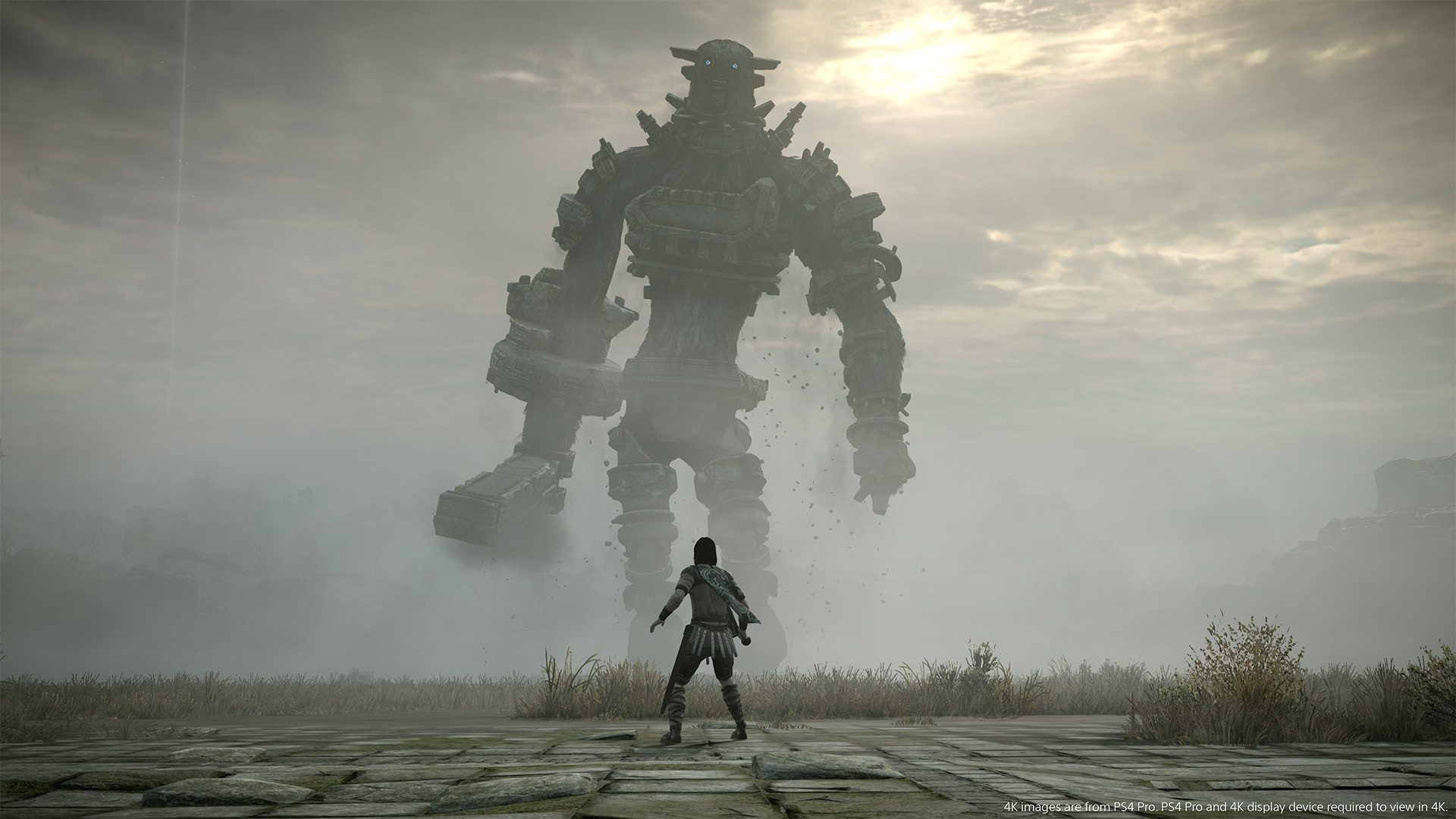
The only remaster to crack my list, Shadow of the Colossus is coming at an opportune time during the PlayStation 4’s life cycle. Even after four years since its initial November 2013 release, the PS4 is going strong with 70.6 million total consoles sold, and is on pace to reach the 84 million milestone set by the PlayStation 3.
Despite the success of the PS4, its sales are a far cry from that of the PlayStation 2 and its title as the best selling video game console of all time. With over 155 million units sold, the PS2 was an incredible piece of hardware that captured people’s hearts and wallets at the beginning of the millennium, over 17 years ago.
Shadow of the Colossus is an incredible reminder of the power of the PS2 and breadth of its lineup. A dazzling looking game at the time, SotC was not only pretty but also awe-inspiring, epic, and moving. While the PS2’s legacy continues to live on, it’s fair to say that a majority of new gamers missed out on the system, its extensive library of titles, and experiences like Shadow of the Colossus.
As I played Shadow of the Colossus on PlayStation 4 on the Paris Games Week show floor, the only thing I could think of was how great it is that Team Ico’s masterpiece is back and better than ever. Running at a slick 60fps on PS4 Pro and 30fps on base PS4, this new re-imagining of SotC not only performs better than its 2005 counterpart (the game was notoriously choppy in areas) but also controls better. Jumping and climbing have been streamlined, and while the controls are still familiar enough to those like me who played SotC back in the day, veterans and newcomers alike should appreciate the new changes.
While I only had the chance to take down the first colossus in my playthrough, I was left thoroughly impressed by Bluepoint Games’ take on Shadow of the Colossus. Whether you’ve played the original to death or are jumping in for the first time, Shadow of the Colossus on PS4 is bound to be a powerful experience.
3) Sea of Thieves
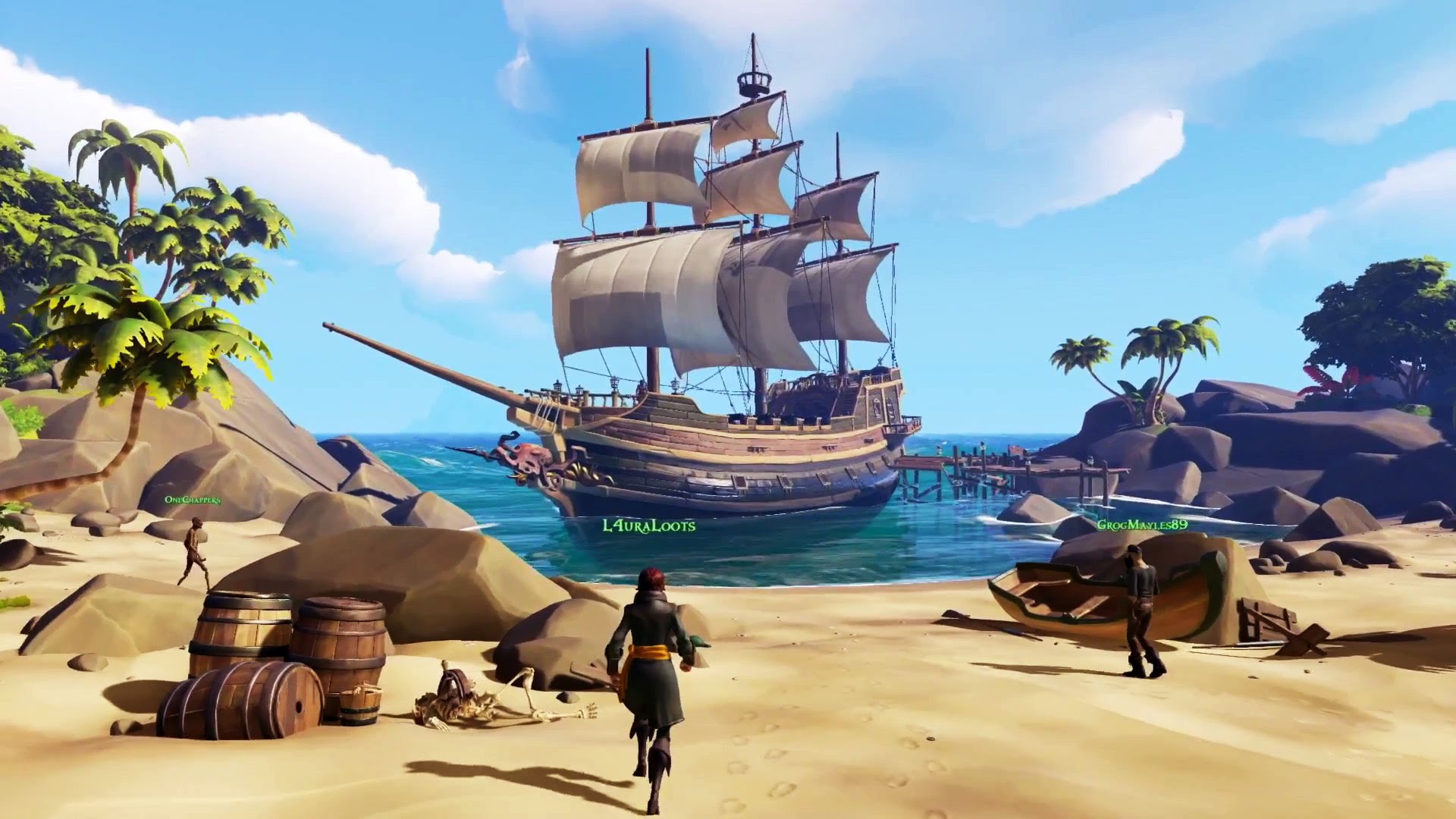
It’s no secret that Microsoft hasn’t had a strong 2017. Regardless of what sales number Phil Spencer or other senior leadership may pull out to prove otherwise, the Xbox One and Xbox One X failed to meet the consumer’s needs this year.
Between the canceling of PlatinumGame’s Scalebound, delaying of at-the-time Xbox One X launch title Crackdown 3, and failure to cultivate new and exciting first-party content, Microsoft lost more consumer goodwill than it gained in a year packed with Switch exclusives and mouth-watering glimpses into the PS4’s 2018. Say whatever nice things you want about Cuphead and Forza Motorsport 7—they can’t carry an entire console.
While 2018 looks equally scarce for the Xbox family of consoles, Sea of Thieves offers an unexpectedly bright spot in the lineup. Oft teased and even more often delayed, Sea of Thieves finally showed itself at Paris Games Week, and I got the chance to play 25 minutes of it.
Alongside a group of fellow (French) adventurers and aided by a spokesperson for Microsoft and Rare, I set off in the world of Sea of Thieves in search of ships to sail, pirates to fight, and treasure to plunder. Despite an early and recurringly setting language barrier between me and my compatriots, I had an absolute blast navigating Sea of Thieves’ harsh seas and even harsher real-world PvP opponents.
Easy to pick up; hard to put down, Sea of Thieves is far more than your average multiplayer game. As part of a living, breathing pirate crew, I was tasked with telling my teammates about nearby islands through an in-game map in the quarters of our personal ship. Others maned the sails and kept a lookout while others loaded the cannons and another steered. Soon enough, we found ourselves face to face with players from across the Paris Games Week show floor. As the rival team’s ship approached, we rushed to our cannons and set fire to the skies. Landing a few key shots, we rendered the opponents’ ship immobile.

With swords drawn and pistols cocked, we leapt from our ship and boarded our enemies’ with greed in our hearts and treasure on our minds. Despite losing some allies in the battle, we managed to clear the enemy team and score a massive treasure chest. As one of us reluctantly dragged the booty back to the ship, the rest of us advanced to a nearby island in search of additional secrets. As we scoured the landscape for clues, we were ambushed by a group of skeletons. As we fired gunshots into the animated corpses, one of my French crew members exclaimed that there was a cave nearby. As I continued to take down one approaching creature after another, the rest of the team descended into the dark depths, apologizing profusely as they left me to fend for myself. Before we knew it, time was up, and the screen faded to black.
While communication had been a challenge, I had a blast playing Sea of Thieves with my new French friends. In less than a half hour, we had sailed the open seas, engaged in fierce naval combat, warded off a pack of feisty skeletons and even discovered a hidden cave. Although it’s hard to say if Sea of Thieves will be able to continue to provide unique moments like these after repeated play, it’s also hard not to like what’s already here. Rare has a winning formula on its hands; if it can perfect the minutiae of the game’s various systems before March 20, Xbox fans should be in for a Rare treat… see what I did there?
2) Monster Hunter: World

Paris Games Week was home to many big games, but none garnered as dedicated of a crowd as Monster Hunter: World. The line for the game stretched around the game’s already massive booth, and when all was said and done, I waited nearly three hours to get my hands on the game. It was worth the wait.
While I’ve played around with previous entries in the franchise, I went into the Monster Hunter: World with essentially a clean slate. Despite the wild success of the Monster Hunter franchise (especially in Japan), Capcom hadn’t rested on its laurels; it seemed like World was intent on distancing itself from its predecessors. Prior trailers and PR buzz touted the freedom of World and how the game borrows heavily from recent Western open-world games. However, talk is talk, and as I approached a station and was handed a PlayStation 4 controller, I wondered if World would deliver on its newfound ambition.
From navigating a lush, green forest filled with massive wildlife to riding down dunes in a sprawling desert, the exploration and variety of Monster Hunter: World’s environments took me by surprise. Giant fauna and vivid flora immediately called to mind a type of scope and detail only found in massive JRPGs like Xenoblade Chronicles X. The game’s controls, while similar to previous iterations in the franchise, have taken a cue from Dark Souls. Combat feels weighty, with dodging and countering a focal point of the experience. At the same time, combat retains a satisfying arcade feel to it; a robust combo system offers branching attack patterns that differ depending upon the equipped weapon. A quick press of R2 will even transform certain weapons à la Bloodborne, allowing for additional attacks and combinations.
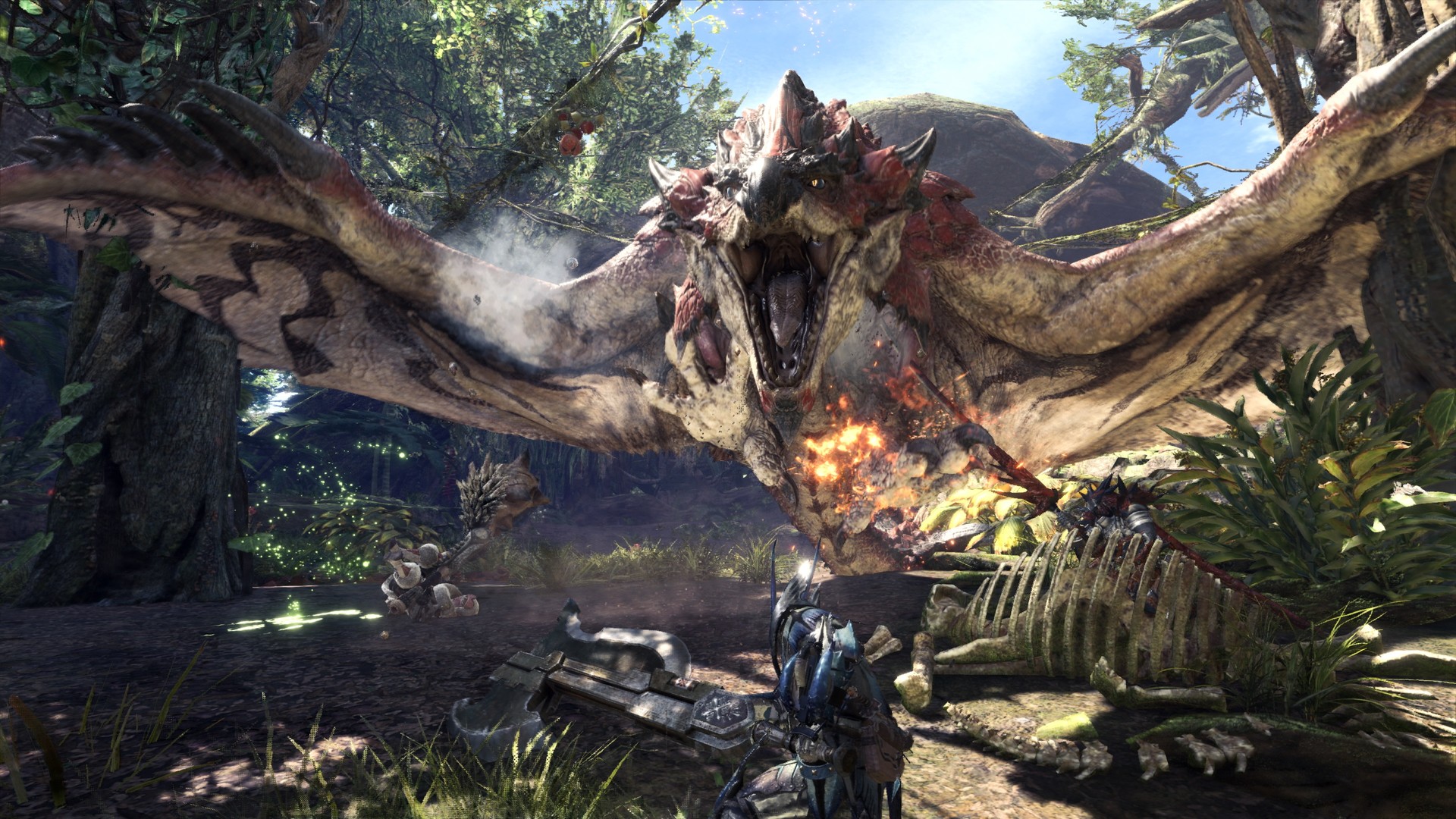
Outside of the size and scope of the game world and satisfying feel of minute-to-minute combat, World’s overall mission structure is fairly straightforward. Like previous Monster Hunter games, players pick from and complete a list of hunts of varying difficulty. My first hunt brought me to the visually stunning aforementioned forest and tasked me with taking down a raptor-like creature, while the second took place in the desert in pursuit of a larger, deadlier beast. In both scenarios, I started by wandering one of the game’s massive zones, gathering enough of a certain herb or material to uncover my target’s footsteps. After eventually tracking down the hulking beast, I engaged it in combat until its health reached a certain threshold and began to flee. From there, I gave chase, reached the target’s ultimate lair, and finished it off.
Although this core gameplay loop is simple and hardly innovative, it’s extremely addicting. After all, Monster Hunter has built itself upon the premise of, well… hunting monsters, and Monster Hunter: World confidently continues this tradition. Yet despite all this, Monster Hunter: World still feels different. Its combat feels fresher, its visuals are striking, and its world is more captivating than ever before. With its unique blend of Eastern and Western ideas, Monster Hunter: World had be hungry for more. Thankfully, I won’t have to wait long, as World releases on January 26 for PlayStation 4 and Xbox One, with a Windows PC version coming later next year.
1) Detroit: Become Human

Perhaps it’s fitting that the best game of Paris Games Week ultimately goes to a title born and bred in Paris, France. Detroit: Become Human has been a bit of an enigma to me since its initial announcement at Paris Games Week 2015. A massive fan of Heavy Rain, I ended up staying away from Beyond: Two Souls after lukewarm reviews and couldn’t quite wrap my head around the premise for Detroit: Become Human. The story of androids attempting to coexist with humans seemed too subtle of an idea to properly execute, especially with Quantic Dream’s history of uncanny valley character models and shaky vocal performances. Even still, I decided to give Detroit a fair shake when I approached its booth at Paris Games Week.
Color me surprised, then, when I played the demo for Detroit only to find myself absolutely blown away. A repeat of E3 2017’s hostage negotiation scene, the Paris Games Week vertical slice for Detroit initially put me off. Despite supporting English language at the convention, a sound bug made hearing voice lines practically impossible. Even after navigating to another station to see if it was an isolated incident, I could only make out faint voices from within the game world, and relied on subtitles to help me along.
And yet, technical issues aside, I was incredibly moved by my emotion playthrough of the scene’s events. As the AI android Connor, I began the demo in an elevator. As I waited apprehensively to see what awaited me at my destination, a dramatic flipping of a quarter set the stage for the scene. Clearly, the game wanted me to know that luck would play a pivotal role in the final outcome of my encounter, whatever it may be.

I exited the elevator to the sounds of police officers clearing an apartment and a woman sobbing. After inspecting a picture frame, I found that I had entered the domicile of John, Caroline, and Emma Phillips. The wife, Caroline, soon entered the entryway, consoled by one of the officers. Still in tears, Caroline inspected Connor and demanded to know why the police had sent an android to help in place of “a real person.”
Immediately, the scene had been set. Something had happened to a member of the family, probably the daughter, and for some reason, there is resentment from the mother towards androids. I had to know more, however, if I were to piece everything together. With a new objective, “Find Captain Allen,” displayed on a nearby wall, I proceeded to make my way around the apartment complex in search of clues.
As I calmly made my way from room to room, members of a SWAT unit took up positions in cover, guns trained on the living room balcony. Gradually, I gleaned new pieces of information and deduced the current predicament. Captain Allen’s apathy towards Connor’s questions and frustrated tone of voice told me that the situation was worsening, and that Allen had little faith in an android resolving it in a peaceful manner. A swipe of a futuristic tablet played a video showing the daughter, Emma, sharing a happy moment with the current assailant, an android named Daniel. Presumably, the android had been serving the Phillips and was considered a part of the family.
Further investigation led to the discovery of the bodies of one of the first responders as well as the girl’s father, John. An ad for a new model android lay in his hand. The pieces of the puzzle finally fit together; Daniel was going to be replaced, and didn’t take the news so well. Grabbing the gun of the deceased officer, I walked outside to confront Daniel, android-to-android.

Detroit: Become Human offers an incredible amount of tantalizing details and a myriad of ways to experience them. Events play out differently depending upon how a player chooses to tackle them; not since Heavy Rain have I experienced gameplay that incorporates player decision-making as successfully as this. By the end of my time with Detroit, I had successfully negotiated Daniel to surrender, using prior pieces of information like his name and completing actions like dropping my gun to help pave the way for this final outcome.
And yet, I wouldn’t have had a gun to drop if I hadn’t picked it up in the first place. I wouldn’t have known the android’s name was Daniel if I hadn’t uncovered Emma’s video diary in her room. The amount of detail and subtlety present in Detroit’s various systems and stories is what left perhaps the biggest impression on me. At first, I thought telling a story of interpersonal conflict would be too ambitious for creative director and writer David Cage, but it seems I was wrong. Detroit: Become Human is the real deal, and despite the PlayStation 4’s crowded 2018 lineup with games like God of War and Spider-Man, people need to pay attention to this one. It’s going to be big.
10 games and nearly 5000 words later, my list of best games at Paris Games Week 2017 is complete. What did you think? Agree with my choices? Disagree? Let us know in the comments below.
Want more from Paris Games Week? Check out our impressions of Dead Cells, as well as our coverage of the outrageous chess game starring Trump and Kim Jong-un, People’s Chess. For even more, check out our video tour of the Paris Games Week show floor, and stay tuned for more articles on Paris Games Week in the coming days.
David is the founder of The Punished Backlog. He has a problem finishing games he starts.
Just beat: Donkey Kong Bananza.
Working on: Hollow Knight: Silksong.
Can't wait for: Metroid Prime 4: Beyond.
Follow David on Twitter at @David_Silbert to keep up to date with all things The Punished Backlog.


